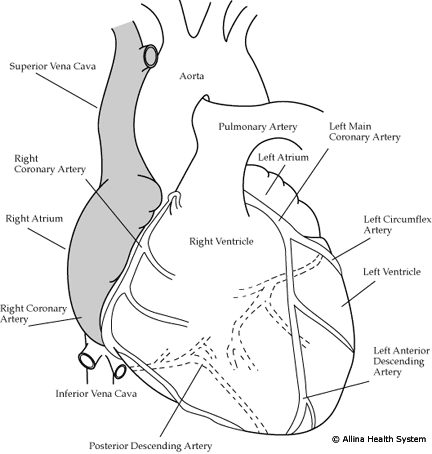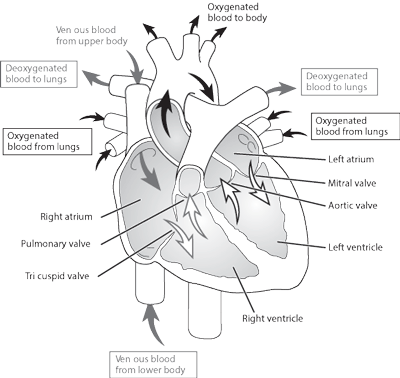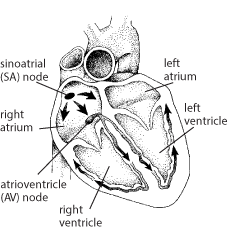
How your heart works
Your heart is a muscle that pumps oxygen-rich blood to your body and brings oxygen-poor blood back to your heart and lungs. Your blood travels through several miles of blood vessels.
The cells in your body need the oxygen to survive. Your heart is located near the middle of your chest, slightly to the left. This tough muscle is about the size of an adult fist, and it weighs about one pound.
Blood is supplied to your heart by two large blood vessels and their branches called coronary arteries. These arteries are on the outside of your heart muscle.
Your right coronary artery supplies the bottom and back of your heart. Your left coronary artery divides into two large blood vessels—the left anterior descending and the circumflex arteries. The left coronary artery supplies blood to the back, left side and front of your heart.

Your heart muscle is about the size of an adult fist.
The right side of your heart receives the oxygen-poor blood and pumps it to your lungs for a new supply of oxygen. The left side of your heart receives the oxygen-rich blood from your lungs and pumps it to the rest of your body.
Each side of your heart has two chambers, an upper one (called an atrium) and a lower one (called a ventricle). Between each chamber are valves that keep blood moving in the right direction.

The left side of your heart receives blood with new oxygen from your lungs and sends it to your body. The right side of your heart receives blood from your body and pumps it to your lungs.
The valves and their purposes are:
- Your tricuspid valve allows blood to flow from the right atrium to the right ventricle.
- Your pulmonic valve allows blood to flow from your right ventricle to your lungs through your pulmonary artery.
- Your mitral valve allows blood to flow from your left atrium to your left ventricle.
- Your aortic valve allows blood to flow from your left ventricle to all parts of your body through your aorta.
Your heart also has an electrical system, which powers your heart's pumping system. A group of special cells sends an electrical impulse through your heart muscle causing it to contract, or beat, about 60 to 100 times each minute.
To make a heartbeat, an electrical impulse starts in a spot in your upper heart called the sinoatrial (SA) node and travels through the atrium down to a spot between the atria and ventricles, called the atrioventricular (AV) node.
Then, the impulse travels through the ventricles. When the electrical impulse travels through the atria, it causes them to contract and send blood to the ventricles.

The two sides of the heart.
When the electrical impulse travels through the ventricles it causes them to contract and send blood to the body.
It is important for the atria and ventricles to contract in a coordinated way to prevent problems.